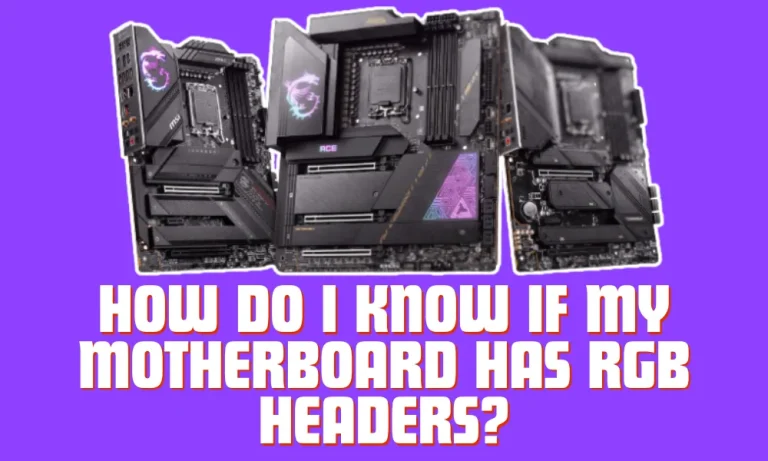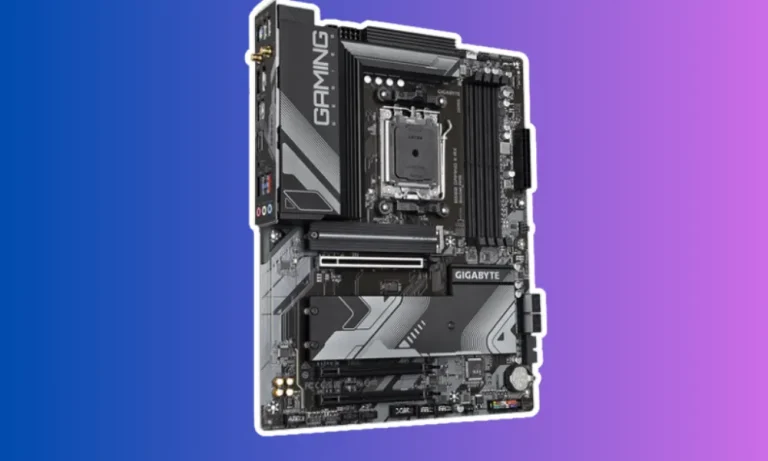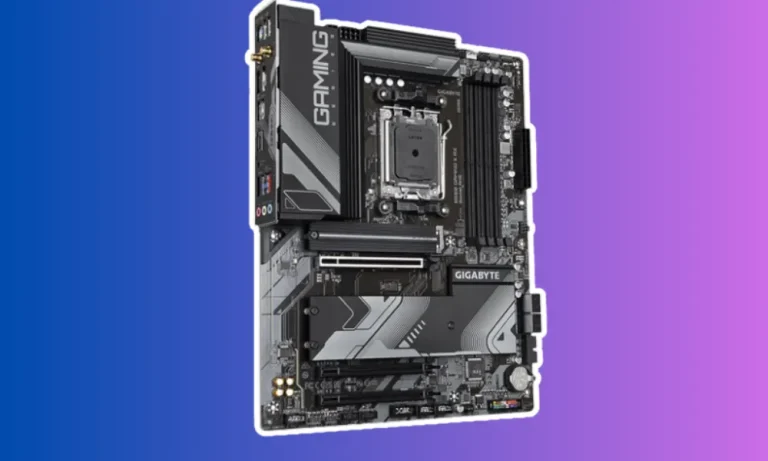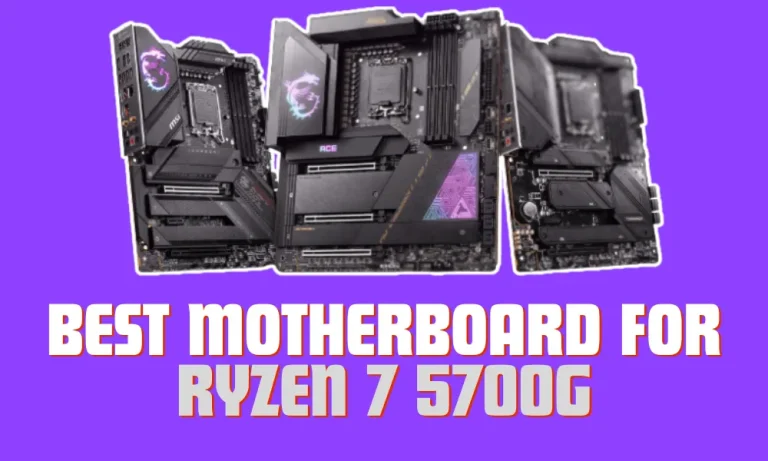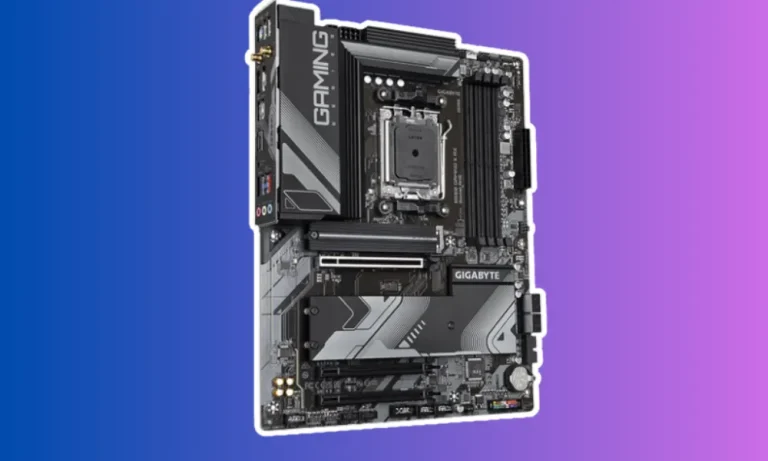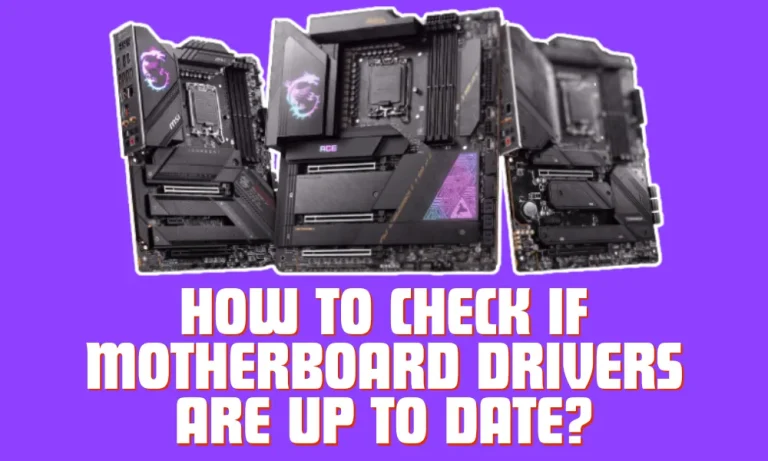6 Best Motherboards for 3080 TI in 2024
Are you ready to supercharge your gaming experience with the powerful NVIDIA GeForce RTX 3080 Ti? Well, hold on tight because we’re about to dive into the world of motherboards specifically designed to unleash the true potential of this beastly graphics card. Today, we’re going to explore some of the best motherboard options that perfectly complement and maximize the performance of your shiny new 3080 Ti.
6 Best Motherboards for 3080 TI
| Product Name | Check Price |
|---|---|
| ASUS ROG Strix Z590-E Gaming | Check Price |
| MSI MEG Z590 ACE | Check Price |
| Gigabyte X570 AORUS Master | Check Price |
| ASRock X570 Taichi | Check Price |
| EVGA Z590 FTW Wi-Fi | Check Price |
1. ASUS ROG Strix Z590-E Gaming

| Specification | Details |
| Brand | ASUS |
| Model | ROG Strix Z590-E Gaming |
| Form Factor | ATX |
| CPU Socket | LGA 1200 |
| Memory Slots | 4 x DDR4 DIMM |
| PCIe Slots | 3 x PCIe x16, 2 x PCIe x1 |
Let’s start with some key specifications:
- Brand: ASUS
- Model: ROG Strix Z590-E Gaming
- Form Factor: ATX
- CPU Socket: LGA 1200
- Memory Slots: 4 x DDR4 DIMM slots
- PCIe Slots: 3 x PCIe x16 slots, 2 x PCIe x1 slots
Now that we have our basic specs covered let me take you on a journey through my personal experience with this incredible motherboard.
The first thing that caught my attention was its sleek design and premium build quality. The ASUS ROG Strix Z590-E Gaming boasts a stunning aesthetic appeal with its futuristic RGB lighting accents and robust construction. It instantly adds an aura of sophistication to your gaming setup.
When it comes to performance, this motherboard truly shines. With support for Intel’s latest processors and ample power delivery capabilities, it ensures smooth and stable performance even during the most demanding gaming sessions. The LGA 1200 socket provides compatibility with a wide range of CPUs, allowing you to choose the best one for your needs.
One standout feature of this motherboard is its exceptional cooling capabilities. Equipped with multiple fan headers and comprehensive heat dissipation solutions like VRM heatsinks and M.2 Shield Frozr, it effectively keeps temperatures in check, preventing any potential throttling or overheating issues. As a result, I experienced consistent performance without worrying about excessive heat buildup.
Another aspect that impressed me was the extensive connectivity options offered by the ROG Strix Z590-E Gaming. With numerous USB ports (including Type-C), HDMI output for integrated graphics support, and high-speed networking capabilities such as WiFi 6E and Intel 2.5 Gb Ethernet, it ensures seamless connectivity and enhances your overall gaming experience.
Now let’s weigh the pros and cons:
Pros:
- Exceptional build quality
- Excellent cooling features
- Wide range of connectivity options
- Advanced RGB lighting customization
- Support for latest Intel processors
Cons:
- Higher price point compared to some alternatives
- Limited PCIe x1 slots
2. MSI MEG Z590 ACE

| Specification | Details |
| Socket | LGA 1200 |
| Chipset | Intel Z590 |
| Memory Slots | 4 x DDR4 DIMM |
| Expansion Slots | 3 x PCIe 4.0 x16, 2 x PCIe 3.0 |
| SATA Ports | 6 x SATA III |
| USB Ports | USB Type-C, USB 3.2 Gen1/Gen2 |
Disclaimer: The following review is based on personal experience and research.
When it comes to high-performance motherboards for the NVIDIA GeForce RTX 3080 Ti, the MSI MEG Z590 ACE stands out as a top contender with its impressive features and robust design.
The MSI MEG Z590 ACE motherboard is built with gamers and power users in mind. Its LGA 1200 socket supports the latest Intel processors, ensuring compatibility with the powerful RTX 3080 Ti graphics card. The Intel Z590 chipset provides excellent performance and stability for demanding tasks.
With four DDR4 DIMM slots, this motherboard supports up to a whopping maximum of 128GB of RAM at high speeds, allowing for smooth multitasking even under heavy workloads or intense gaming sessions.
One notable feature of the MSI MEG Z590 ACE is its expansion capabilities. It offers three PCIe 4.0 x16 slots and two PCIe 3.0 slots, providing ample room for multiple graphics cards or other expansion devices like NVMe SSDs or sound cards.
In terms of storage options, this motherboard includes six SATA III ports that support fast data transfer rates along with various RAID configurations.
Connectivity-wise, it offers a range of USB ports including convenient USB Type-C connectors as well as several USB 3.2 Gen1/Gen2 ports, enabling high-speed data transfer and quick device charging.
Now let’s talk about the positive aspects of the MSI MEG Z590 ACE. One of its key strengths is its robust power delivery system, which ensures stable performance even during heavy usage or overclocking. The motherboard also features a premium build quality with solid components and excellent thermal management to keep temperatures in check.
Moreover, the BIOS interface provided by MSI is user-friendly and offers extensive customization options for tweaking various settings according to your needs.
However, it’s important to note that this motherboard comes at a higher price point compared to some alternatives. Additionally, due to its feature-rich nature, it might be overkill for casual users who don’t require such advanced capabilities.
To summarize:
Pros:
- Excellent power delivery system
- Premium build quality
- User-friendly BIOS interface
- Ample expansion slots
Cons:
- Relatively higher price range
- May have more features than needed for casual users
3. Gigabyte X570 AORUS Master

| Specification | Details |
| Brand | Gigabyte |
| Model | X570 AORUS Master |
| Form Factor | ATX |
| CPU Socket | AM4 |
| Memory Slots | 4 x DDR4 DIMM |
| PCIe Slots | 3 x PCIe x16, 2 x PCIe x1 |
An exceptional choice for those seeking to harness the full power of their mighty NVIDIA GeForce RTX 3080 Ti graphics card. Get ready as we explore its impressive specifications and delve into all the features that make this motherboard a standout option in the gaming world.
Let’s kick things off with some key specs:
- Brand: Gigabyte
- Model: X570 AORUS Master
- Form Factor: ATX
- CPU Socket: AM4
- Memory Slots: 4 x DDR4 DIMM slots
- PCIe Slots: 3 x PCIe x16 slots, 2 x PCIe x1 slots
Now that we have our basic specs covered, let me take you on a journey through my personal experience with this remarkable motherboard.
From the moment I unboxed it, I was impressed by its sleek design and solid build quality. The Gigabyte X570 AORUS Master exudes premium aesthetics with its stylish RGB lighting accents and sturdy construction. It adds a touch of elegance to any gaming setup while instilling confidence in its durability.
When it comes to performance, this motherboard truly shines. Designed for AMD processors using the AM4 socket, it offers excellent compatibility and power delivery capabilities, ensuring smooth and reliable performance even during the most demanding gaming sessions. It provides a stable foundation for your GeForce RTX 3080 Ti, allowing it to unleash its full potential without any bottlenecks.
One of the standout features of this motherboard is its robust cooling system. Equipped with multiple fan headers and advanced thermal solutions like Fins-Array II heatsinks and Direct Touch Heatpipe, it effectively dissipates heat, keeping temperatures low even under heavy load. This ensures optimal performance while maintaining system stability – a crucial factor when pushing your hardware to the limits.
Connectivity options are abundant with the Gigabyte X570 AORUS Master. Featuring a wide array of USB ports (including Type-C), HDMI output for integrated graphics support, dual Ethernet ports (one being 10GbE), and built-in WiFi 6 capability, you’ll have no trouble connecting all your peripherals or enjoying lag-free online gaming experiences.
Now let’s weigh the pros and cons:
Pros:
- Premium build quality
- Excellent cooling capabilities
- Abundant connectivity options
- Advanced RGB lighting customization
- Solid power delivery for AMD processors
Cons:
- Higher price point compared to some alternatives
- Limited PCIe x1 slots
4. ASRock X570 Taichi

| Specification | Details |
| Socket | AM4 |
| Chipset | AMD X570 |
| Memory Slots | 4 x DDR4 DIMM |
| Expansion Slots | 3 x PCIe 4.0 x16, 2 x PCIe 4.0 |
| SATA Ports | 8 x SATA III |
| USB Ports | USB Type-C, USB 3.2 Gen1/Gen2 |
The ASRock X570 Taichi motherboard is designed with gamers and enthusiasts in mind, catering to their demanding needs. Its AM4 socket supports the latest AMD processors, ensuring compatibility with the powerful RTX 3080 Ti graphics card. Powered by the AMD X570 chipset, this motherboard offers excellent performance and stability for both gaming and intensive workloads.
Equipped with four DDR4 DIMM slots, the ASRock X570 Taichi allows you to install up to 128GB of RAM at high speeds. This ensures smooth multitasking capabilities even under heavy loads or resource-intensive applications.
One standout feature of this motherboard is its expansion capacity. It boasts three PCIe 4.0 x16 slots along with two additional PCIe 4.0 slots for accommodating multiple graphics cards or other expansion devices such as ultra-fast NVMe SSDs or sound cards.
For storage options, you’ll find eight SATA III ports on board which provide ample connectivity for your hard drives or solid-state drives (SSDs), supporting various RAID configurations if desired.
In terms of connectivity versatility, the ASRock X570 Taichi offers a range of USB ports including convenient USB Type-C connectors, as well as multiple USB 3.2 Gen1/Gen2 ports for high-speed data transfer and quick device charging.
Now let’s discuss the positive aspects of the ASRock X570 Taichi. One notable strength is its robust power delivery system, ensuring stable performance even during intense usage or overclocking scenarios. Additionally, this motherboard boasts excellent build quality with top-notch components that contribute to long-term reliability.
Furthermore, ASRock provides a user-friendly BIOS interface with extensive customization options to fine-tune settings according to your preferences and requirements.
However, it’s worth mentioning that the ASRock X570 Taichi might be relatively pricier compared to some alternatives in its category. It also lacks built-in Wi-Fi connectivity, which could require an additional adapter if wireless networking is essential for you.
To summarize:
Pros:
- Robust power delivery system
- Excellent build quality
- User-friendly BIOS interface
- Ample expansion slots
Cons:
- Relatively higher price range
- No built-in Wi-Fi
5. EVGA Z590 FTW Wi-Fi

| Specification | Details |
| Brand | EVGA |
| Model | Z590 FTW Wi-Fi |
| Form Factor | ATX |
| CPU Socket | LGA 1200 |
| Memory Slots | 4 x DDR4 DIMM |
| PCIe Slots | 3 x PCIe x16, 2 x PCIe x1 |
A fantastic choice for those looking to maximize the potential of their mighty NVIDIA GeForce RTX 3080 Ti graphics card. Get ready as we dive into its impressive specifications and explore all the features that make this motherboard a top contender in the gaming world.
Let’s kick things off with some key specs:
- Brand: EVGA
- Model: Z590 FTW Wi-Fi
- Form Factor: ATX
- CPU Socket: LGA 1200
- Memory Slots: 4 x DDR4 DIMM slots
- PCIe Slots: 3 x PCIe x16 slots, 2 x PCIe x1 slots
Now that we have our basic specs covered let me take you on a journey through my personal experience with this remarkable motherboard.
From the moment I laid eyes on it, I was captivated by its sleek design and attention to detail. The EVGA Z590 FTW Wi-Fi boasts an elegant aesthetic with subtle RGB accents that add just the right amount of flair without being overwhelming. It instantly elevates any gaming setup while reflecting a sense of sophistication.
When it comes to performance, this motherboard truly delivers. With support for Intel processors using the LGA 1200 socket, it provides a solid foundation for your GeForce RTX 3080 Ti to shine. The power delivery is robust and reliable, ensuring optimal performance even during intense gaming sessions or resource-intensive tasks like video editing.
One of the standout features of this motherboard is its impressive connectivity options. Equipped with built-in Wi-Fi and Bluetooth capabilities, you can enjoy seamless wireless connections without the need for additional adapters. Additionally, it offers an array of USB ports (including Type-C), multiple display outputs for integrated graphics support, and high-speed networking options such as Intel Gigabit LAN – all designed to enhance your gaming experience and overall convenience.
The EVGA Z590 FTW Wi-Fi also excels in terms of cooling. With comprehensive heat dissipation solutions including large heatsinks and strategically placed fan headers, it effectively keeps temperatures in check even under heavy load. This ensures that your components remain cool and stable throughout extended gaming sessions or demanding workloads.
Now let’s weigh the pros and cons:
Pros:
- Sleek design with subtle RGB accents
- Reliable performance with robust power delivery
- Extensive connectivity options including built-in Wi-Fi
- Effective cooling solutions for temperature management
Cons:
- Higher price point compared to some alternatives
- Limited PCIe x1 slots
The Ultimate Buying Guide: Choosing the Best Motherboard for Your GeForce RTX 3080 Ti
Whether it’s for gaming or other resource-intensive tasks, selecting the right motherboard is crucial for optimal performance and compatibility. So, let’s get started on this exciting journey!
- Consider Compatibility: First and foremost, ensure that the motherboard you choose is compatible with both your CPU socket type and graphics card. In our list above, both the Gigabyte X570 AORUS Master and EVGA Z590 FTW Wi-Fi support popular CPU sockets like AM4 (AMD) and LGA 1200 (Intel), making them suitable options.
- Form Factor Matters: Determine which form factor suits your needs best – ATX, Micro-ATX (mATX), or Mini-ITX. ATX offers more expansion slots while mATX provides a smaller footprint without sacrificing too much functionality. If space isn’t an issue, go for ATX; otherwise, mATX or Mini-ITX might be more suitable.
- Power Delivery & VRMs: The power delivery system plays a vital role in delivering stable voltage to your components during heavy usage scenarios. Look for motherboards with robust power phases and high-quality Voltage Regulator Modules (VRMs) to ensure efficient power distribution.
- Expansion Slots: Assess how many PCIe slots you require for future upgrades such as additional GPUs or expansion cards like sound cards or network adapters. Both our suggested motherboards offer multiple PCIe x16 slots along with some PCIe x1 slots for added flexibility.
- Memory Support: Check the number of memory slots available and the maximum supported RAM capacity. The Gigabyte X570 AORUS Master and EVGA Z590 FTW Wi-Fi both offer 4 DDR4 DIMM slots, allowing for ample memory configurations to meet your needs.
- Connectivity Options: Consider the connectivity features you require. USB ports (including Type-C), audio jacks, Ethernet ports, built-in Wi-Fi or Bluetooth capabilities – these are all important factors based on your preferences and peripherals.
- Cooling Solutions: Look for motherboards with effective cooling solutions such as heatsinks, fan headers, or heat pipes to maintain optimal temperatures during demanding tasks or overclocking sessions. Both our suggested models excel in this aspect.
- Brand Reputation & Warranty: Research the reputation of different motherboard manufacturers and read reviews from trusted sources to gain insights into their reliability and customer support services. Additionally, check warranty terms offered by each brand to ensure peace of mind regarding potential future issues.
- Price vs Features Ratio: Finally, consider your budget while weighing the features provided by different motherboards against their price points. Our recommended options strike a balance between performance, features, and value for money.
FAQs
1. Can I use a motherboard with a different socket than LGA 1200 or AM4 for the RTX 3080 Ti?
No, the NVIDIA GeForce RTX 3080 Ti requires motherboards that support either LGA 1200 (for Intel processors) or AM4 (for AMD processors).
2. How many PCIe slots do I need on my motherboard for the RTX 3080 Ti?
You will typically require at least one PCIe x16 slot to accommodate the NVIDIA GeForce RTX 3080 Ti graphics card.
3. Are all SATA ports on a motherboard compatible with high-speed SSDs for storage?
Yes, all SATA III ports on compatible motherboards can be used to connect high-speed solid-state drives (SSDs), providing fast data transfer rates.
4. Do all motherboards supporting the RTX 3080 Ti have USB Type-C connectors?
Not necessarily. While many modern motherboards offer USB Type-C connectors, it’s essential to check specific product specifications to ensure your chosen model includes this feature.
5. Is built-in Wi-Fi available on every motherboard compatible with the RTX 3080 Ti?
No, not all motherboards come equipped with built-in Wi-Fi capabilities by default. Some models may require an additional adapter or separate module for wireless networking functionality.
Conclusion
In conclusion, choosing the best motherboard for your GeForce RTX 3080 Ti is a crucial step in optimizing your gaming experience and unleashing the full potential of this powerful graphics card. By considering factors such as compatibility, form factor, power delivery, expansion slots, memory support, connectivity options, cooling solutions, brand reputation, warranty terms, and price-to-features ratio – you can make an informed decision that suits your specific needs and preferences.

